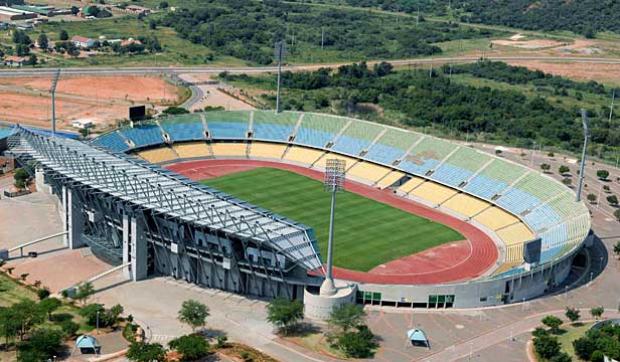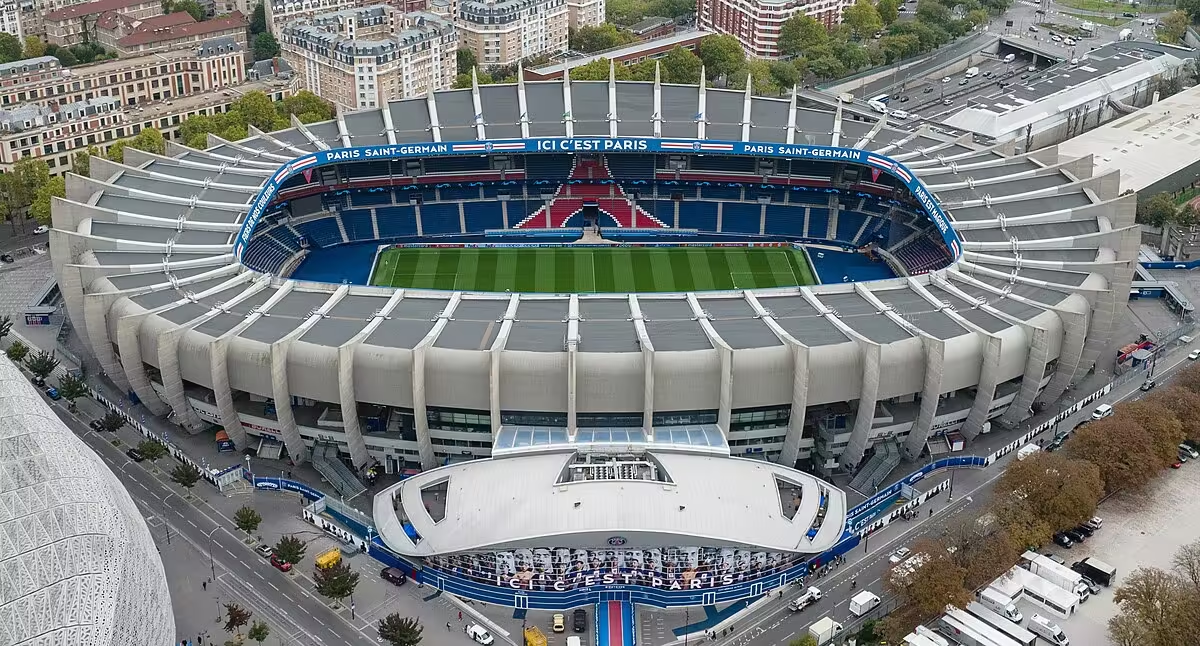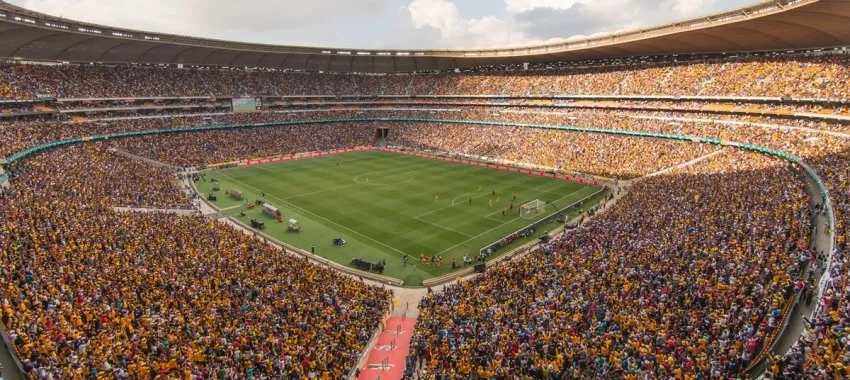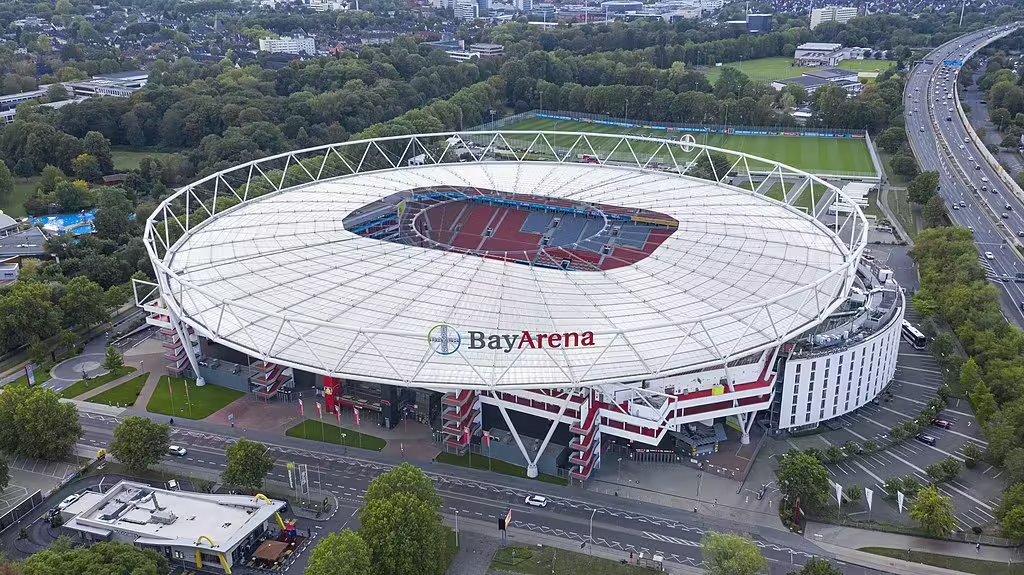The Royal Bafokeng Stadium is a multi-purpose stadium located in Phokeng, near Rustenburg in South Africa. The stadium was built and is managed by the Royal Bafokeng Nation, a community that owns the land on which the stadium is situated. It is the only community-owned stadium in South Africa and has a seating capacity of 44,530.
The stadium was built in 1999 and underwent renovations for the 2010 FIFA World Cup. It is a world-class facility that meets FIFA’s standards for hosting international soccer matches. In addition to soccer, the stadium is also used for rugby and athletics events. The stadium has hosted several high-profile matches, including the 2010 FIFA World Cup matches, the 2013 Africa Cup of Nations, and the 2014 African Nations Championship.
Key Takeaways
- The Royal Bafokeng Stadium is a multi-purpose stadium located in Phokeng near Rustenburg, South Africa, and is owned by the Royal Bafokeng Nation.
- The stadium was built in 1999 and underwent renovations for the 2010 FIFA World Cup. It has a seating capacity of 44,530 and meets FIFA’s standards for hosting international soccer matches.
- The stadium is used for soccer, rugby, and athletics events and has hosted several high-profile matches, including the 2010 FIFA World Cup matches, the 2013 Africa Cup of Nations, and the 2014 African Nations Championship.
Location and Accessibility
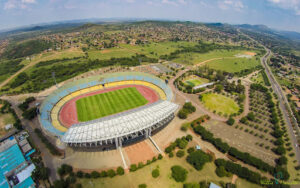
Geographical Setting
Royal Bafokeng Stadium is located in the village of Phokeng, approximately 13 kilometers north of central Rustenburg in the North West Province of South Africa. The stadium lies alongside the R565 (Sun City Road) that runs through Phokeng. The stadium is situated at an altitude of 1,200 meters above sea level and is surrounded by the beautiful Magaliesberg Mountains.
Transportation Links
The stadium is easily accessible by car via the R565 and R104 roads. Visitors can take the R104 in the northern direction out of Rustenburg and then the R565 toward Phokeng Sun City. The stadium will be clearly visible on the right. There is ample parking space available for visitors.
Public transportation options are also available. The Rustenburg Rapid Transport (RRT) bus service connects the stadium to Rustenburg city center and other nearby areas. The RRT buses are equipped with air conditioning, free Wi-Fi, and wheelchair access. Visitors can also take a minibus taxi from Rustenburg to Phokeng and then walk to the stadium.
Overall, the location of the Royal Bafokeng Stadium is convenient for visitors, with easy access by car or public transportation.
Stadium History
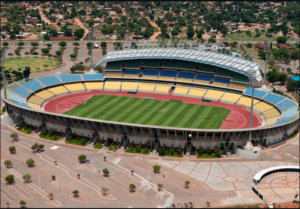
Construction and Opening
Royal Bafokeng Stadium is a multi-purpose stadium located in Phokeng near Rustenburg, South Africa. The stadium was built and is managed by the Royal Bafokeng Nation. Construction of the stadium began in 1999 and it was officially opened in 2000. The stadium underwent renovations in preparation for the 2010 FIFA World Cup, hosted by South Africa.
The stadium has a seating capacity of 44,530 and is the home stadium for Premier Soccer League club Platinum Stars. The stadium has also hosted international football matches, including the 2013 Africa Cup of Nations.
Major Events
The Royal Bafokeng Stadium has hosted several major events since its opening. The stadium hosted five first round group matches and the round of 16 match between USA and Ghana during the 2010 FIFA World Cup. The stadium was also used as a training venue for several teams during the tournament.
In addition to football, the stadium has also hosted rugby and athletics events. The Leopards rugby team host large attendance matches during the Currie Cup at the stadium. The stadium has also hosted several athletics events, including the South African Athletics Championships.
Overall, the Royal Bafokeng Stadium has become an important sports venue in South Africa, hosting both local and international events.
Architecture and Design
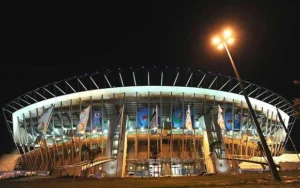
Stadium Capacity
Royal Bafokeng Stadium is a modern multi-purpose stadium located in Phokeng, near Rustenburg, South Africa. The stadium was built in 1999 and has a seating capacity of 44,530 spectators. During the 2010 FIFA World Cup, the stadium was expanded to accommodate 42,000 spectators. The stadium is one of the largest stadiums in South Africa and has hosted several major sporting events, including the 2013 African Cup of Nations.
Facilities
The stadium is equipped with state-of-the-art facilities that offer a unique experience to the fans. The stadium has four main stands, each with its own unique design and features. The main stand is a three-tiered structure that offers a panoramic view of the stadium. The other three stands are two-tiered structures that offer a great view of the pitch. All the stands are covered, providing protection from the sun and rain.
The stadium is equipped with modern facilities such as VIP boxes, press boxes, and conference rooms. The VIP boxes offer a luxurious experience to the fans and are equipped with comfortable seating, air conditioning, and catering services. The press boxes are equipped with modern communication facilities, enabling journalists to cover events at the stadium effectively. The conference rooms are equipped with modern audio-visual equipment, making them ideal for business meetings and seminars.
In conclusion, the Royal Bafokeng Stadium is a modern and well-designed stadium that offers a unique experience to the fans. The stadium’s state-of-the-art facilities make it an ideal venue for hosting major sporting events and conferences.
Uses and Functions
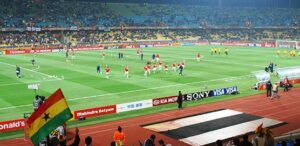
The Royal Bafokeng Stadium is a multi-purpose stadium that serves various purposes and events. It is primarily used for football matches, but it also hosts concerts and other events.
Football Matches
The stadium is the home ground of the Platinum Stars, a Premier Soccer League club. It has a seating capacity of 44,530, making it one of the largest stadiums in South Africa. The stadium was also one of the venues for the 2010 FIFA World Cup, and it hosted five matches during the tournament.
The Royal Bafokeng Stadium is known for its excellent facilities and has been praised for its modern design. The stadium has a natural grass pitch, which is well-maintained and provides a perfect playing surface for football matches.
Concerts and Events
Apart from football matches, the Royal Bafokeng Stadium also hosts concerts and other events. The stadium has played host to some of the biggest names in the music industry, including Rihanna, Coldplay, and Bon Jovi.
The stadium has excellent acoustics and a large seating capacity, making it an ideal venue for concerts and other events. The stadium is equipped with state-of-the-art sound and lighting systems, which ensure that the audience has an unforgettable experience.
In conclusion, the Royal Bafokeng Stadium is a versatile venue that serves various purposes. Its modern design, excellent facilities, and large seating capacity make it an ideal venue for football matches, concerts, and other events.
Economic Impact
Local Economy Boost
The Royal Bafokeng Stadium has had a significant positive impact on the local economy since its construction. The stadium has hosted numerous events, including football matches, rugby games, and concerts, which have attracted large crowds of people from both within and outside the region. These events have generated revenue for local businesses, such as hotels, restaurants, and shops, which have benefited from increased patronage.
According to a report by the Royal Bafokeng Nation, the stadium’s economic impact extends beyond the immediate vicinity of the stadium. The report states that the stadium has helped to boost the economy of Rustenburg, the nearest city, by attracting visitors who spend money in the city’s shops, restaurants, and hotels. The report estimates that the stadium’s economic impact has been significant, contributing millions of rands to the local economy each year.
Employment Opportunities
The construction and ongoing operation of the Royal Bafokeng Stadium have created employment opportunities for people in the local community. During the construction phase, many local workers were employed to build the stadium, providing them with a source of income. Since the stadium’s completion, it has created jobs in various areas, including security, maintenance, and hospitality.
The Royal Bafokeng Nation has made a concerted effort to ensure that local people benefit from the stadium’s economic impact. The nation has implemented a policy of preferential procurement, which prioritizes local businesses when awarding contracts for goods and services. This policy has helped to create additional employment opportunities for people in the local community.
Overall, the Royal Bafokeng Stadium has had a positive economic impact on the local community. It has generated revenue for local businesses and created employment opportunities for people in the area. The stadium’s economic impact is expected to continue into the future, as it continues to attract visitors to the region.
Community and Culture
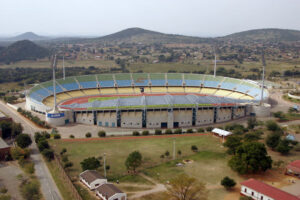
Cultural Significance
The Royal Bafokeng Stadium is more than just a sports venue. It holds a significant cultural value for the Royal Bafokeng Nation, as it was built and is managed by them. The stadium’s unique design reflects the cultural heritage of the Bafokeng people. The stadium’s façade is adorned with traditional patterns and motifs, and the entrance is marked by a statue of a Bafokeng warrior.
Community Programs
The Royal Bafokeng Stadium is not only a place for sports events but also a hub for community programs. The stadium hosts a range of programs aimed at uplifting the community and promoting social cohesion. These programs include educational programs, health and wellness initiatives, and youth development programs.
One of the most notable community programs is the Royal Bafokeng Sports Development Program. The program aims to identify and develop young talent in sports, providing them with the necessary resources and training to excel in their chosen sport. The program has produced several successful athletes who have gone on to represent South Africa in international competitions.
Another community program is the Royal Bafokeng Youth Centre, which provides a safe and nurturing environment for young people. The centre offers a range of activities, including sports, arts, and cultural programs, aimed at developing the skills and talents of young people.
The Royal Bafokeng Stadium’s commitment to community development and cultural preservation makes it a unique and valuable asset to the Royal Bafokeng Nation and the broader Rustenburg community.
Sustainability Efforts
Royal Bafokeng Stadium is committed to sustainability efforts and reducing waste. In fact, it was deemed a zero-waste facility in January 2023, making it the first venue of its size to achieve this certification [1]. The stadium’s management team has implemented several measures to achieve this goal, including reducing the use of single-use plastics, recycling, and composting.
The stadium also utilizes renewable energy sources such as solar panels and wind turbines to power its operations. In addition, it has implemented a rainwater harvesting system to reduce water usage. These efforts have not only reduced the stadium’s environmental impact but have also resulted in cost savings for the management team [1].
Furthermore, Royal Bafokeng Holdings, the stadium’s managing company, is committed to social responsibility and investing in the well-being of the Royal Bafokeng Nation (RBN) [4]. The company supports initiatives aimed at improving the RBN’s well-being and creates inter-generational wealth for the RBN through its social performance and investment programs.
Overall, Royal Bafokeng Stadium’s sustainability efforts and commitment to social responsibility set an example for other sports venues to follow. By implementing environmentally friendly practices and investing in the community, the stadium is not only reducing its impact on the environment but also contributing to the well-being of the local community.
References
- At Sports Stadiums, Reducing Waste Is a Team Effort – The New York Times
- Corporate Social Responsibility – Royal Bafokeng Holdings
Renovations and Upgrades
Royal Bafokeng Stadium has undergone several renovations and upgrades over the years to maintain its world-class status. In preparation for the 2010 FIFA World Cup, the stadium underwent major upgrades to improve its facilities and increase its seating capacity. The upgrades included the installation of a new electronic scoreboard, upgrades to the PA system, and improved floodlights, making it the perfect football destination for the world cup.
The stadium’s seating capacity was increased to 44,530, and the seating layout was reconfigured to improve spectator comfort and provide better viewing angles. The stadium’s VIP facilities were also upgraded, and new hospitality suites were added to cater to corporate clients.
In addition to the upgrades made for the World Cup, further renovations have been carried out since then. The Royal Bafokeng Nation, which owns and manages the stadium, has invested in improving the stadium’s playing surface, installing a state-of-the-art irrigation system to keep the pitch in top condition.
Overall, the renovations and upgrades have helped to ensure that the Royal Bafokeng Stadium remains one of the best sports facilities in South Africa. Its modern facilities and world-class amenities make it a popular destination for football fans and sports enthusiasts alike.
Frequently Asked Questions
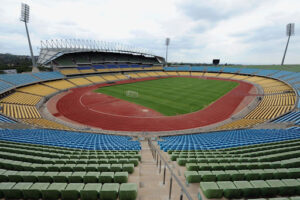
What is the seating capacity of the Royal Bafokeng Stadium?
As of 2024, the Royal Bafokeng Stadium has an official seating capacity of 44,530 for football matches. [1]
What fixtures are scheduled for the Royal Bafokeng Stadium?
The stadium is used for football, rugby, and athletics events. It has hosted Premier Soccer League club Platinum Stars, and the Leopards rugby team for large attendance matches during the Currie Cup. [2]
Has the Royal Bafokeng Stadium undergone recent renovations?
The stadium underwent renovations in preparation for the 2010 FIFA World Cup hosted by South Africa. The main grandstand was expanded with a third tier and larger roof to fulfill all major FIFA criteria. [3]
How is the Royal Bafokeng Platinum related to the stadium?
The Royal Bafokeng Platinum is not directly related to the stadium. However, both are owned and managed by the Royal Bafokeng Nation. [2]
What are some of the features that make the Royal Bafokeng Stadium stand out?
The stadium is located in the village of Phokeng, approximately 13 kilometers north of central Rustenburg. It has a unique design that incorporates local culture and heritage, with a circular shape representing the traditional African kraal. The stadium also has a state-of-the-art playing surface, and the stands are designed to provide excellent sightlines for all spectators. [4]
Who are the members of the Royal Bafokeng family associated with the stadium?
The Royal Bafokeng Nation is a community of approximately 150,000 people who are direct descendants of the Bafokeng people. The current king of the Royal Bafokeng Nation is King Leruo Molotlegi. [2]
Other Stadiums Articles:
Check Out: Orlando Pirates Stadium: A Comprehensive Guide
Check Out: Benjamin Mkapa Stadium: Tanzania’s State of the Art Sports Facility
Check Out: Allianz Arena: The Architectural Marvel and Home of FC Bayern Munich
Check Out: Turf Moor: The Fortress and Historic Home of Burnley FC
Check Out: Etihad Stadium: Where Manchester City’s Dreams Take Flight
